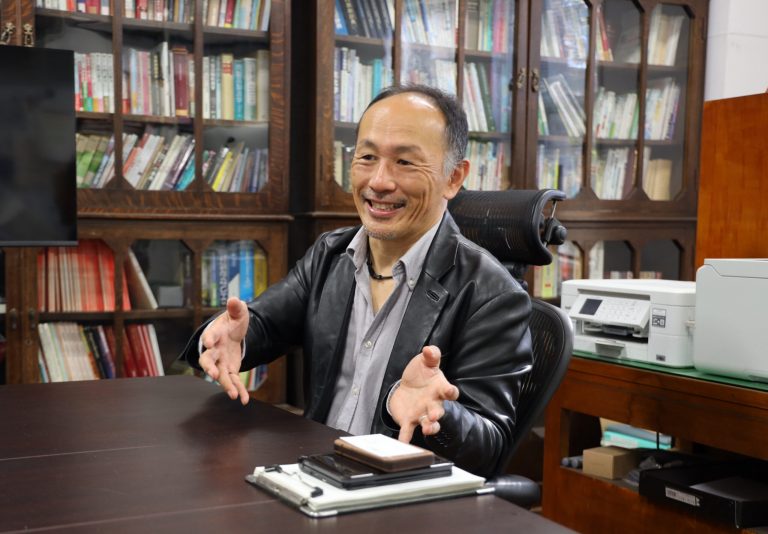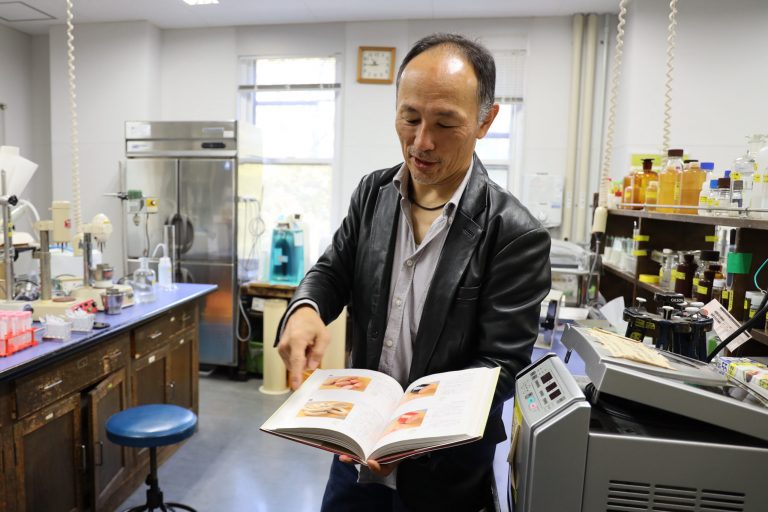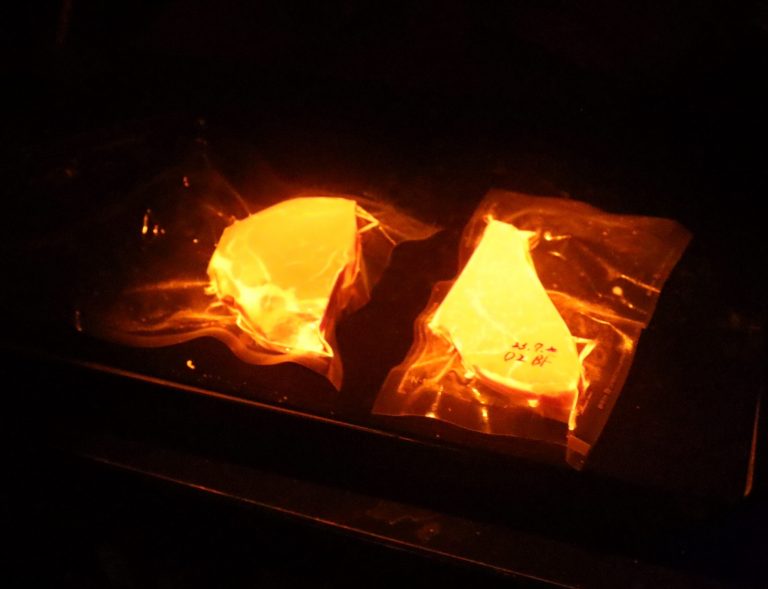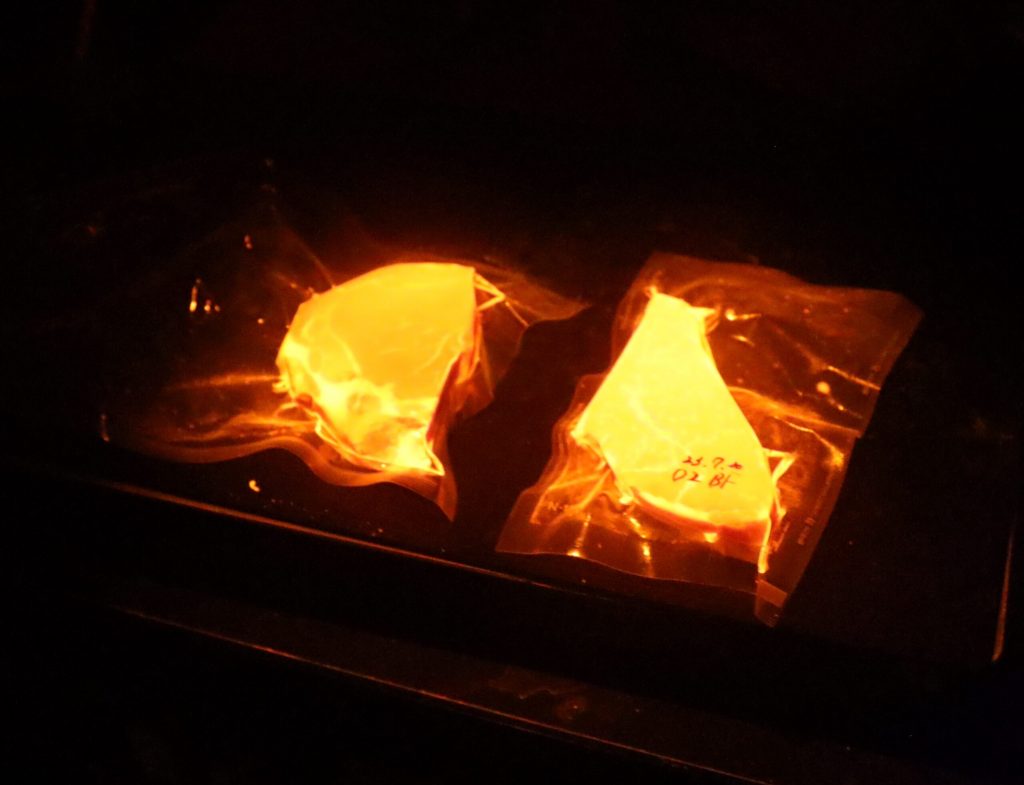
Associate Professor Jun-ichi Wakamatsu of the Applied Food Science Lab, Research Faculty of Agriculture, has spent the last two decades of his career conducting research on the production of nitrate- and nitrite-free cured meat, among other topics. His goal is to develop a process to improve the color and appearance of these meats so that they are appealing to customers; in September 2023, Air Water Inc. began marketing nitrate- and nitrite-free dry-cured salami manufactured using a process developed in close collaboration with Wakamatsu.
Nitrates have been used to preserve meats at least as far back as 1000 BCE, in combination with salt; industrial processes that used nitrates to cure meat were developed at the end of the 19th century. “Nitrates and nitrites serve multiple purposes,” explains Wakamatsu. “They preserve the meat, inhibit bacterial growth, boost flavor, suppress oxidation, and give the meat an appealing pink-red color. However, in Japan, the common assumption is that nitrates and nitrites are simply added for color.”

“In fact, it is not nitrates that give the cured meat their color, but nitrites. Nitrate is reduced to nitrite by bacteria in the meat. In addition to inhibiting further growth of the bacteria, nitrite reacts with myoglobin to give nitrosylmyoglobin, which gives meat a pink-red color that mimics the color of fresh meat,” Wakamatsu continues. “ Unfortunately, residual nitrite in meat products can react with other compounds in other foods during digestion to give compounds called nitrosamines, which are known to be carcinogenic, causing increased risks of liver and other cancers. As a result, nitrate- and nitrite-free cured meats have become much more popular, as they do not pose an increased cancer risk.”
One major drawback of nitrate- and nitrite-free cured meats is their appearance. During processing, the color of the meat turns from reddish to brown—a color unappealing to consumers. This is where Wakamatsu’s research comes in. “Proscuitto di Parma—Parma ham—retains a rich reddish color after being cured for up to two years, despite the lack of added nitrates or nitrites. I investigated the reason for this phenomenon, and discovered that it was due to the presence of ZnPP—which is similar in structure to heme, differing in the presence of a zinc ion in the place of iron,” Wakamatsu elaborates. “Later, I also discovered that some lactic acid bacteria (LAB) could form ZnPP in salted minced meat; however, these bacteria were not safe for consumption. Hence, I set out to isolate various strains of food-grade LAB so that they could be used to improve the color of nitrate- and nitrite-free dry cured sausages.”

The result was the discovery of a strain of Lactobacillus lactis subsp. cremoris—an LAB that is extensively used in the dairy industry—that was able to produce ZnPP under aerobic and anaerobic conditions in nitrate- and nitrite-free dry cured sausages. It is this method that was adopted by Air Water Inc. “Salami was selected for the study and for production as it cures quite quickly compared to dry-cured ham, allowing for the process to be observed and fine-tuned in short time spans—and also allowing for rapid identification when a batch goes bad,” Wakamatsu details. “Of course, I have eaten some of these salami myself. They have a sweet-sour flavor like that of summer sausage.” Wakamatsu is now on the search for LAB strains that produce ZnPP but do not greatly alter the taste of salami.

“When I started this line of research, two decades ago, it was a very niche field with just a handful of research groups globally,” Wakamatsu reflects. “Now it is a very popular area of research, and I continue to work hard to stay at the forefront of the field.”


